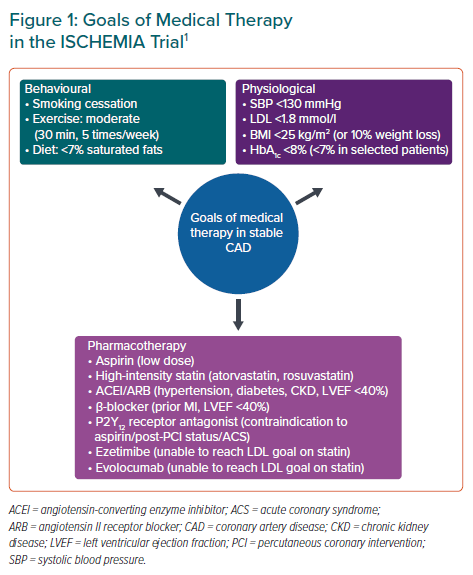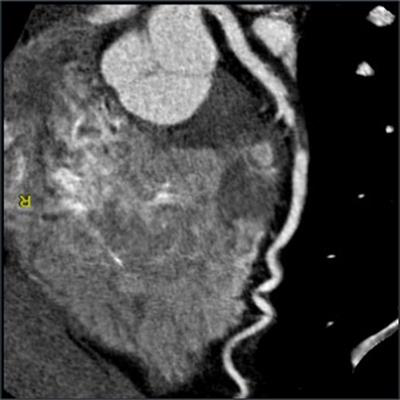

Lifestyle changes might be the only treatment that some people need. Making lifestyle changes often can help prevent, manage or treat CAD. These include lifestyle changes, medications, coronary artery stenting and surgery. If your doctor determines that you have CAD, there are a number of ways to treat it. This procedure is usually done in a hospital or an outpatient cardiac catheterization lab. Your doctor will be able to study the arteries’ blood flow and see any narrow areas or blockages. Special X-rays are taken while the dye is flowing through your coronary arteries. The tube is threaded into your coronary arteries, and dye is released into artery. Your doctor will insert a thin, flexible tube called a catheter into a blood vessel in your groin (upper thigh) or arm. This test examines the insides of your coronary arteries. Your doctor may recommend a coronary angiogram if the previous tests or other factors indicate CAD is likely. Among other things, an echocardiogram can show how well the body’s blood flows through the heart, how strong it can pump blood when it beats and whether any areas of the heart itself have been injured by CAD.Ĭoronary angiography. It uses high-frequency sound waves to make a moving picture of your heart. These pictures can help your doctor see if your heart is pumping efficiently and your blood is flowing normally.Įchocardiography. In some cases, the stress test may include taking images of your heart while you’re active and at rest. This could be due to poor overall fitness, anemia, lung disease or other conditions. Some people cannot keep exercising as long as long as expected during a stress test. Your doctor can then correlate these findings with any symptoms such as chest pain or shortness of breath. It can also detect any abnormal heart rhythm, or disruption in electrical current to your heart. The stress test can reveal abnormal changes in your heart rate or blood pressure. It can show whether your heart is getting enough oxygen-rich blood to work properly while active. Small pads are applied to your chest, arms and legs with wire leads that detect and record your heart's electrical pattern.Īn exercise EKG, or stress test, is usually done while you’re actively moving on a treadmill. To get a baseline reading, the test is done as you quietly rest. It can also show if there is a current or previous heart attack, or if the current blood flow is too low. It can show if your heart’s electrical pattern is normal. An EKG shows how fast your heart beats and whether it is beating regularly at the time of the test. If these levels are not normal, it could indicate a risk for CAD.Įlectrocardiogram (EKG). Blood tests measure the levels of certain fats, cholesterol, sugar and proteins in your blood. Depending on these findings, your doctor may suggest some or all of the following:īlood tests. Then you will have a thorough physical exam, including weight and blood pressure readings. Your level of physical activity and whether or not you smoke are also very important. There are a variety of exams and tests that can help your doctor make the diagnosis or determine if you are at risk for developing CAD.įirst, you will be asked questions about your medical history, symptoms and family history. Your doctor will evaluate you for CAD based on a number of findings, including your symptoms, risk factors and the results of several tests. That is why it is so important to check your risk factors, find out if you have heart disease and get treatment if you do. Some heart attacks are so severe that they may result in sudden death. Sometimes the first sign of heart disease is when an artery becomes completely blocked, resulting in a heart attack. Not everyone with CAD gets a warning or experiences symptoms. In some cases, angina feels like indigestion. Pain may also occur in the shoulders, back, neck, arms or jaw. When this occurs, your heart muscle may not get the oxygen it needs.Ī common symptom of reduced blood flow to the heart is angina, or chest pain, which can feel like squeezing and pressure in the chest.

This can reduce or stop the flow of blood. The plaque can also rupture, leading to a blood clot on the inner surface of the artery. Over a period of time, plaque can harden, which can narrow the arteries and reduce the flow of blood. With CAD, the arteries that carry oxygen-rich blood to the heart muscle become narrowed or blocked by a waxy substance called plaque. Coronary artery disease (CAD) is the most common type of heart disease and is the number one cause of death for both men and women in the U.S.


 0 kommentar(er)
0 kommentar(er)
